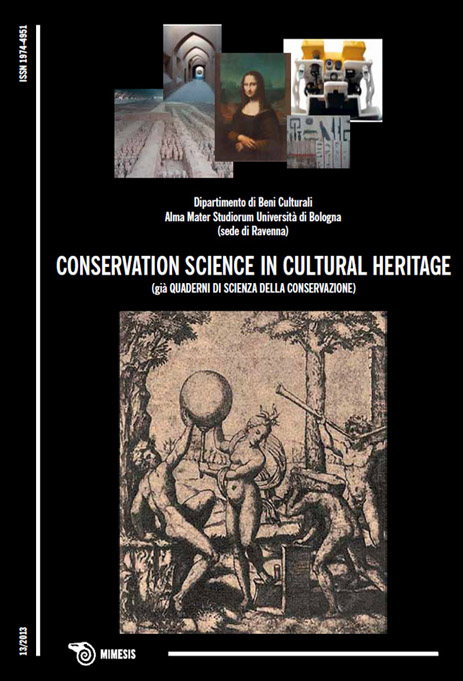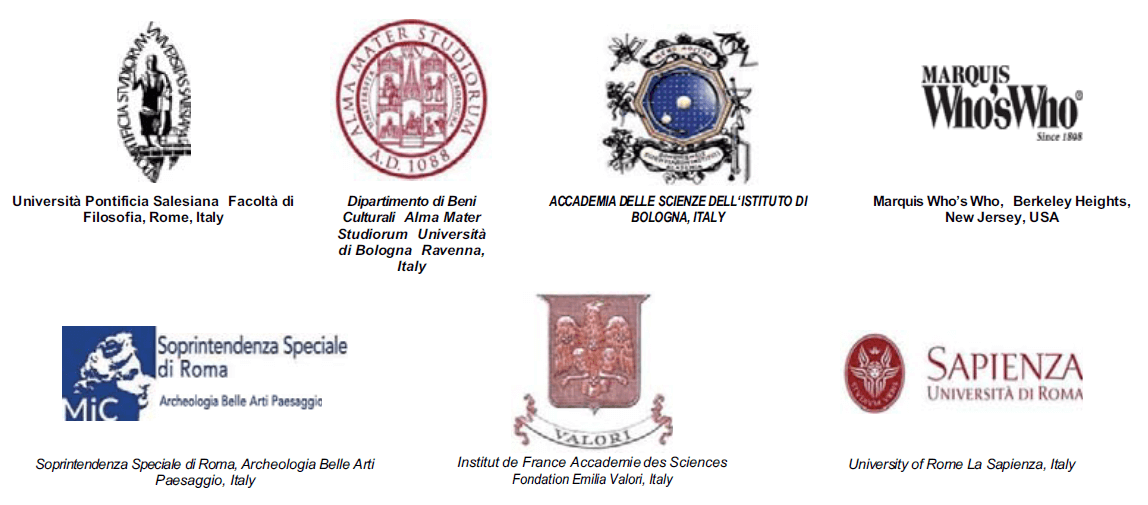A comparison between beauty in Islamic urban textures and European historic cities: differences in urban conservation strategies
DOI:
https://doi.org/10.6092/issn.1973-9494/4185Keywords:
introverted-Islamic architecture, European urban façade, urban beauty, courtyard houses, urban conservationAbstract
Summary
According to the Oriental-Islamic notion of urban space, socio-economic classifications cannot be materialized on the exterior appearance of buildings. On the contrary, in a European historic city, the social status of citizens can easily be expressed on urban facades. Introverted-Islamic textures consist of buildings with courtyards in which interior private facades are more important than the exterior appearance of buildings. In this definition, the European concept of urban façade is not observed. Pursuing an analytic-comparative method, this article attempts to analyze the fundamental differences in the concept of urban beauty between the European historic center and the introverted inner city. Furthermore, the paper defines urban aesthetics with respect to the particularities of the relationship between open and closed spaces. In addition, the principles and characteristics of esoteric beauty in introverted fabrics are discussed. With integral knowledge of the basic differences in urban aesthetics in the two different contexts, the paper tries to analyze the sequent differences which possibly exist in urban conservation strategies. Likewise, the reasons for differences in urban regeneration strategies have been analytically argued. The paper concludes that the definition of urban beauty in introverted-Islamic fabrics completely differs from the perception of beauty in European historic cities. Accordingly, urban conservation strategies in introverted areas should pursue the particularities of Islamic urban beauty. However, the paper emphasizes the necessity for urban transformation in order to give such static areas a new lifestyle.
Riassunto
Secondo la nozione orientale-islamica di spazio urbano, le classificazioni socio-economiche non possono materializzarsi sull’aspetto esteriore degli edifici, mentre invece nelle città storiche europee lo status sociale dei cittadini può esprimersi facilmente attraverso le facciate esterne. Le strutture islamiche introverse consistono di edifici con un cortile nei quali le facciate interne private sono più importanti dell’aspetto esteriore degli edifici stessi. In questa definizione non rispettiamo il concetto europeo di facciata urbana. Perseguendo un metodo comparativo-analitico, questo articolo cerca di analizzare le differenze fondamentali nel concetto di bellezza urbana che ci sono tra il centro storico europeo e la città interna introversa e definisce, inoltre, l’estetica urbana in relazione alle particolarità del rapporto tra spazio chiuso e aperto, verificando poi i principi e le caratteristiche della bellezza esoterica nei tessuti urbani. Avendo una conoscenza integrale delle differenze di base dell’estetica urbana nei due diversi contesti, l’articolo cerca di analizzare le conseguenti differenze che possono esistere nelle strategie di conservazione urbana, descrivendo appunto analiticamente i motivi delle differenze nelle strategie di rigenerazione urbana. Si conclude sostenendo che la definizione di estetica urbana nei tessuti islamici introversi differisce completamente dal concetto di bellezza nelle città storiche europee. Di conseguenza, le strategie di conservazione urbana nelle aree chiuse dovrebbero seguire le particolarità della bellezza urbana islamica. Ad ogni modo, l’articolo enfatizza la necessità di una trasformazione urbana di dare un nuovo stile di vita a queste aree congelate.
Résumé
D’après la notion orientale/islamique d’espace urbain, les classifications socioéconomiques ne peuvent pas se matérialiser sur l’aspect extérieur des bâtiments, alors que dans les villes historiques européennes, le statut social des habitants peut s’exprimer facilement à travers les façades extérieures. Les structures islamiques tournées vers l’intérieur consistent en bâtiments avec une cour, où les façades intérieures privées sont plus importantes que l’aspect extérieur des bâtiments eux-mêmes. Dans cette définition, le concept européen de façade urbaine n’est pas respecté. Cet article adopte une méthode comparative et analytique pour tenter d’analyser les différences fondamentales existant dans le concept de beauté urbaine entre les quartiers historiques d’Europe et la ville tournée vers l’intérieur. L’esthétique urbaine est définie d’après les particularités du rapport entre espace fermé et espace ouvert, en examinant également les principes et les caractéristiques de la beauté ésotérique dans les tissus urbains. Avec une connaissance complète des différences fondamentales dans l’esthétique urbaine de ces deux contextes, l’article tente d’analyser les différences pouvant exister en conséquence dans les stratégies de conservation urbaine, et décrit analytiquement les raisons des différences dans les stratégies de régénération urbaine. Il conclut en soutenant que la définition d’esthétique urbaine dans les tissus islamiques tournés vers l’intérieur diffère entièrement du concept de beauté dans les villes historiques européennes. De ce fait, les stratégies de conservation urbaine dans les zones fermées devraient suivre les particularités de la beauté urbaine islamique. Dans tous les cas, l’article souligne la nécessité d’une transformation urbaine, afin de donner un nouveau style de vie à ces zones « congelées ».
Zusammenfassung
Nach dem orientalisch-islamischen Verständnis des städtischen Raums können soziale und wirtschaftliche Klassenunterscheidungen nicht im äußeren Aussehen der Gebäude Ausdruck finden, während in den historischen europäischen Städten, der soziale Status der Bürger leicht an den Außenfassaden zu erkennen ist. Die introvertierten islamischen Strukturen bestehen aus Gebäuden mit einem Hof, wo die privaten Innenfassaden wichtiger sind, als das äußere Aussehen der Gebäude selbst. Mit dieser Definition respektieren wir nicht das europäische Verständnis von städtischer Fassade. Anhand einer vergleichend-analytischen Methode versucht dieser Artikel, die wesentlichen Unterschiede in der Auffassung von stadtbaulicher Schönheit zu untersuchen, die zwischen der europäischen Altstadt und der introvertierten, internen Stadt bestehen und definiert darüber hinaus die stadtbauliche Ästhetik in Bezug auf die Besonderheit der Beziehung zwischen geschlossenem und offenem Raum, wobei dann die Grundsätze und die Merkmale der esoterischen Schönheit des städtischen Gefüges untersucht werden. Dank einer vollständigen Kenntnis der grundlegenden Unterschiede zwischen Stadtbau-Ästhetik in den beiden verschiedenen Umfeldern, versucht der Artikel die daraus folgenden Unterschiede zu analysieren, die in der Strategie der Stadtkonservierung bestehen, und beschreibt analytisch die Gründe für die Differenzen zwischen den Strategien zur Regenerierung der Städte. Abschließend wird behauptet, die Definition stadtbaulicher Ästhetik im islamischen Gefüge sei völlig verschieden von der Auffassung von Schönheit in den europäischen Städten. Demzufolge sollten die Strategien der Stadtkonservierung in geschlossenen Bereichen den Besonderheiten der stadtbaulichen Schönheit des Islams folgen. In allen Fällen unterstreicht der Artikel die Notwendigkeit der Umwandlung der Städte, d.h. die Notwendigkeit, diesen eingefrorenen Gebieten einen neuen Lebensstil zu vermitteln.
Resumen
Según la noción oriental islámica de espacio urbano, las clasificaciones socioeconómicas no se pueden materializar en el aspecto exterior de los edificios, mientras que en las ciudades históricas europeas el estatus social de los ciudadanos puede expresarse fácilmente a través de las fachadas exteriores. Las estructuras islámicas introvertidas se conforman por edificios con un patio en el que las fachadas interiores privadas son más importantes que el aspecto exterior de los mismos edificios. En esta definición no se respeta el concepto europeo de fachada urbana. Persiguiendo un método comparativo-analítico, este artículo intenta analizar las diferencias fundamentales entre el concepto de belleza urbana del centro histórico europeo y el de la ciudad interior introvertida y, además, define la estética urbana en relación con un vínculo especial entre el espacio cerrado y el espacio abierto, para luego verificar los principios y las características de la belleza esotérica en los tejidos urbanos. Con un conocimiento integral de las diferencias a la base de la estética urbana en estos dos contextos diferentes, el artículo intenta analizar las consiguientes diferencias que pueden manifestarse en las estrategias de conservación urbana y realiza una descripción analítica de los motivos de las diferencias en las estrategias de regeneración urbana. Para concluir se afirma que la definición de estética urbana en los tejidos urbanos islámicos introvertidos difiere completamente respecto al concepto de belleza de las ciudades históricas europeas. Como consecuencia, las estrategias de conservación urbana de las áreas cerradas debería seguir las características de la belleza urbana islámica. En todo caso, el artículo pone énfasis en la necesidad de una transformación urbana para dar un nuevo estilo de vida a estas áreas congeladas.
Резюме
Согласно восточно-исламскому понятию городского пространства социально-экономическая классификация не может отражаться на внешнем виде зданий, в то время как в исторических европейских городах, наоборот, общественный статус граждан легко может выражаться во внешних фасадах. Интроверсные исламские структуры представляют собой здания с двором, внутренние частные фасады которых более важны, чем сам внешний вид зданий. В этом понимании не выдерживается европейское понятие городского фасада. Используя сравнительно-аналитический метод, данная статья пытается проализировать основные различия концепции городской красоты между европейским историческим центром и внутренним интроверсным городом, а также определить городскую эстетику в связи с особенностью отношений между открытым и закрытым пространством, а затем проверить принципы и характеристики эзотерической красоты в городской ткани. На основе глубокого познания основных различий в городской эстетике двух разных контекстов в статье анализируется вытекающие различия в стратегии городской консервации, именно с подробным описанием причины различий в стратегиях городской регенерации. Сделан вывод, что определение городской эстетики в интровертных исламских тканях полностью отличается от понятия красоты в европейских исторических городах. Следовательно, стратегии городской консервации в закрытых зонах должны бы придерживаться особенностей исламской городской красоты. Во всяком случае, в статье подчеркивается необходимость городской трансформации, чтобы дать новый стиль жизни этим замороженным местам.
摘要
按照东方-伊斯兰城市空间的概念,社会的经济等级不会表现在建筑的外部,反而在欧洲的历史城市可以通过建筑外部明显地表达出来公民的社会地位。
伊斯兰的内向建筑实际上是有庭院的房子,其内部的私人门面比外部还重要。这种定义不符合欧洲的城市门面概念。通过对比分析的方式,该文章试图分析欧洲历史中心和内向城市美学概念的基本区别,并且确定了有关城市美学的封闭和开放空间的特殊性关系;另外也研究了城市结构内的神秘美丽的原则和特征。
通过两个方面城市美学基本区别的完整认识,该文章试图分析城市保护策略所造成的不同,以及解释分析了城市再生策略的不同因素。最后文章确定了伊斯兰内向结构的城市美学跟欧洲历史城市的美学概念完全不同。从而封闭空间的城市保护策略应该遵循伊斯兰的城市美学特点。总而言之,文章强调了城市转型现象应该给予这些”冻结”区域一个崭新生活风格的必要性。
References
FALAMAKI M., 2005, An Essay on Urban Conservation, From Venice to Shiraz, Faza, Tehran
FALAMAKI M., 2007, Existence and future of historical human settlements; Conference held at Tehran University in 1971,Faza, Tehran
PIRNIA M. K., 2010, Introduction to islamic architectura of Iran, Shorush-e-Danesh, Teheran
AA.VV., 2010,Building regulations in the historic center of Yazd, Cultural Heritage
ROMANO M., 1993, L'estetica della città europea, Forme e immagini, Giulio Einaudi editore, Torino
GHAZBANPOOR J., 2000,Iran from sky, Ministry of Housing & Urban Development, Teheran
FALAMAKI M., 2009,Urban Improvement and Renewal, Samt, Teheran
FALAMAKI M., 2008,Revitalization of Historical Monuments and Cities, Tehran University
BENEVOLO L., 1993, Lo scenario fisico delle città, in L. Benevolo, Principi e forme della città, Credito Italiano
ROMANO M., 1993,L'estetica della città europea,Einaudi
PAKZADJ., 2007,An intellectual history of urbanism (1), From utopia to reality,The new towns development corporation, Teheran
SOLTANZADEH H., 2007, Persian Bazaar, Cultural Research Bureau, Teheran
BELFIORE E., 2001, Il rimodellamento dello spazio urbano, Gangemi Editore, Rome
Documentation and reserach center, 2005,Ganjnameh, cyclopaedia of Iranian islamic architecture, Volume 14, Yazd Houses, Rowzaneh Publications, Teheran
DURKEEA.N.-D., 2005, The School of the Shadhdhuliyyah, Volume One: Orisons, Sh. A. Nurudin Durkee
MOOSAVI M., 2012, Socio-spatial Obstacles of Urban Sustainability in Historic Center of Cities in Iran, Journal of basic and applied scientific research, pp. 4407-12
DAHER R.F., 2005, Urban Regeneration/Heritage Tourism Endeavours: The Case of Salt, Jordan, Local Actors, International Donors, and the State,International Journal of Heritage Studies, pp. 289–308
DORATLI N., 2005, Revitalizing Historic Urban Quarters: A Model for Determining the Most Relevant Strategic Approach, European Planning Studies, pp. 749-772
IPEKOGLU B., 2006, An architectural evaluation method for conservation of traditional dwellings, Building and environment, 41, pp. 386-94, 386
APPLEYARD D., 1979, The Conservation of European Cities, MIT
RANELLUCCI S., 2003,Il restauro urbano, Teoria e prassi, UTET, Rome
LANG J., 1987,Creating Architectural Theory: The role of the Behavioral Sciences in Environmental, Design, New York
ALTMAN I., 1975, Environment and Social Behavior, Ca. Brooks/Cole, Monterey
ALTMAN I., CHEMERS M., 1984,Culture and Environment , Cambridge University Press
SCHWARTZ B., 1968,The social psychology of privacy, Am. J. Psychol.
HAMIDI S.; Ramezani S., 2010, Privacy and Social Interaction in Traditional Towns to Contemporary Urban Design in Iran, American J. of Engineering and Applied Sciences, pp. 502-8.
Downloads
Published
How to Cite
Issue
Section
License
Copyright (c) 2013 Pourya Nazemi
Copyrights and publishing rights of all the texts on this journal belong to the respective authors without restrictions. Authors grant the journal right of first publication.
This journal is licensed under a Creative Commons Attribution 4.0 International License (full legal code).
See also our Open Access Policy.






